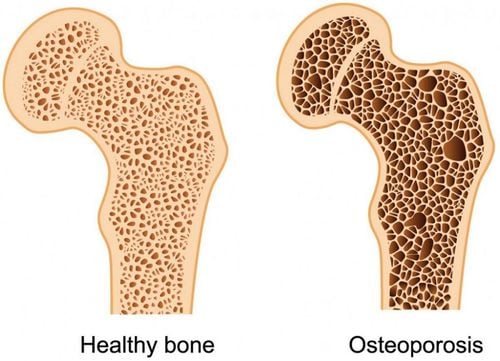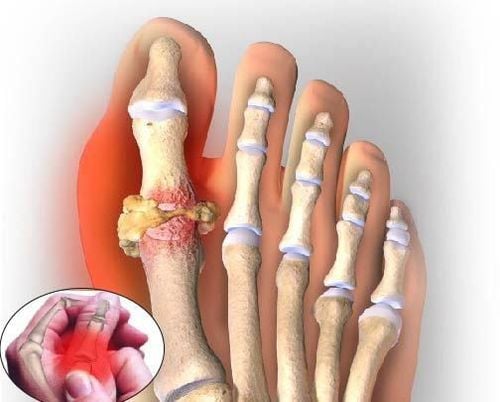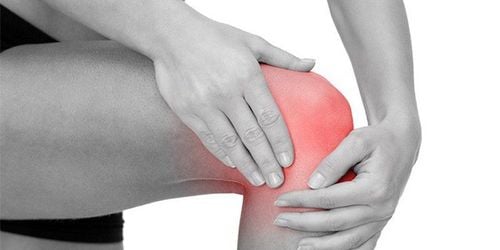This is an automatically translated article.
Brisk walking not only brings many benefits to health but also is a simple sport. Easiest practice for everyone. All ages from young to old can practice this sport easily. The writer often practices walking in the evening around the park near his house. People often say, walking in the morning is better, but in my opinion, it doesn't matter what time of the day, the most important thing is that you feel comfortable to practice, suitable for your time. To get the most out of your walk, it's best to let your mind completely relax, free from work or other errands. Walking is a sport that is not difficult to practice, does not cost money, as long as you... be diligent and work hard, you can practice. Brisk walking is also the gentlest way to exercise the body, almost all 660 muscles in the body are mobilized but do not affect ligaments and joints. Walking is extremely beneficial for our health.Walking briskly is good for health - Toning muscles and losing weight To achieve high results, you need to walk really fast. Brisk walking is a form of exercise that requires the "cooperation" of the glutes, thighs, abs, arms and shoulders. These movements not only make the body more flexible but also firmer, without causing damage to the joints. To be good for reducing dumbness, the most suitable speed is from 7 to 9.5km/h (ie, walking 2 times faster than normal walking), and accompanied by strong hand strokes. Going for at least 60 minutes a day is effective. - Help the heart stronger Walking briskly helps blood flow through the heart muscle to flow faster, making the heart healthy, preventing diseases. Regular walking also lowers blood pressure, which means less stressful effects on the arteries. In addition, this sport can increase the amount of good cholesterol (HDL) in the blood.
Walking briskly helps blood flow through the heart muscle to flow faster, making the heart healthy, preventing diseases. (illustration)
- Prevent osteoporosis Walking briskly not only strengthens muscles, but also has a good effect on bones. Recent studies show that, in women who walk briskly regularly and drink enough calcium, the risk of osteoporosis is much lower than those of the same age but do not exercise. - Preventing stroke In a 14-year study, researchers at Harvard University (USA) surveyed the health habits of nearly 72,500 nurses. They found that people who walked for at least six hours a week had a 40% lower risk of having a stroke. - Boost immunity While walking briskly, the blood circulation and metabolism are accelerated, helping to eliminate toxins, so that the body's immune system is strengthened. A scientific study done in Boston showed that women with breast cancer who walked 3 to 5 hours a week had a 50% increase in survival rate compared to those who were inactive.
- Help relax the spirit For people with depression, stress, fatigue, insomnia, loss of appetite... walking 3-4 times a week with a time of about 30 minutes will be like taking a special medicine. That's because brisk walking will help increase the secretion of the hormone endorphine, making the practitioner feel more relaxed and happy. - Reduce pain from arthritis Millions of people around the world are suffering from osteoarthritis of the knee. A brisk walk is a good solution for them; This sport relieves pain because it strengthens the muscles around the joints. Tips for brisk walking - Prepare suitable shoes, sandals and clothes Clothing according to weather conditions, loose and airy with sweat-wicking fabrics such as cotton (in summer), warm enough ( in winter). Wear suitable, well-fitting shoes.
Should coordinate with rhythmic breathing throughout the walk. (illustration)
- Before starting to practice, it is recommended to spend 5-10 minutes doing warm-up movements to "warm up the body", avoid muscle tension, and get tired quickly during practice. - Posture when walking, always keep the head straight, eyes forward, shoulders and arms for comfort. When walking, you should swing your arms forward and backward to the rhythm of your feet, creating a right angle with your elbows. The hips and waist should be in line with the legs, without leaning the head forward or backward. - Distance per step, speed and walking time In the beginning, you should walk for about 20 minutes / time, 4-5 times / week, then gradually increase the practice time, do not exercise too much. Go at a slow speed at first, then increase a little faster. Go at a pace that you feel most comfortable with. It is important to practice regularly and regularly. Should coordinate with rhythmic breathing throughout the walk. - For the elderly, people with chronic diseases, cardiovascular disease, high blood pressure, etc. should consult the doctor's instructions before exercising. - For those who choose to walk briskly to lose weight, the exercise time should be at least 60 minutes/time. If tired, you can divide it into 2 walks, or 3 walks so that each walk must be from 20 minutes. above is effective. - Make a walking group If exercising alone makes you lazy, you should invite more people to go with you. It can be friends, relatives, neighbors or people you know when you go to the gym together, talking while walking helps you feel more happy, comfortable and not bored with this sport.
According to the Shopping Guide













